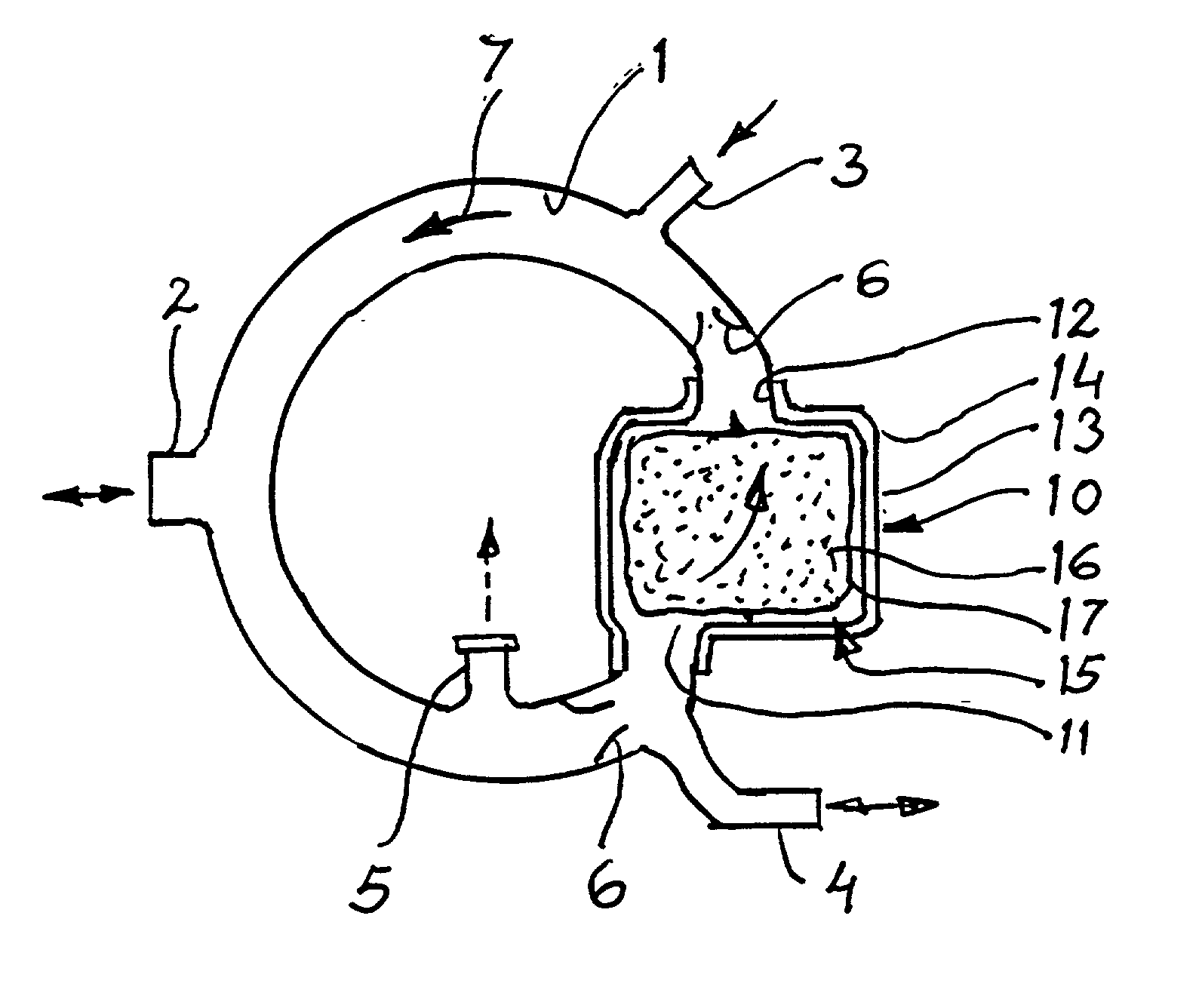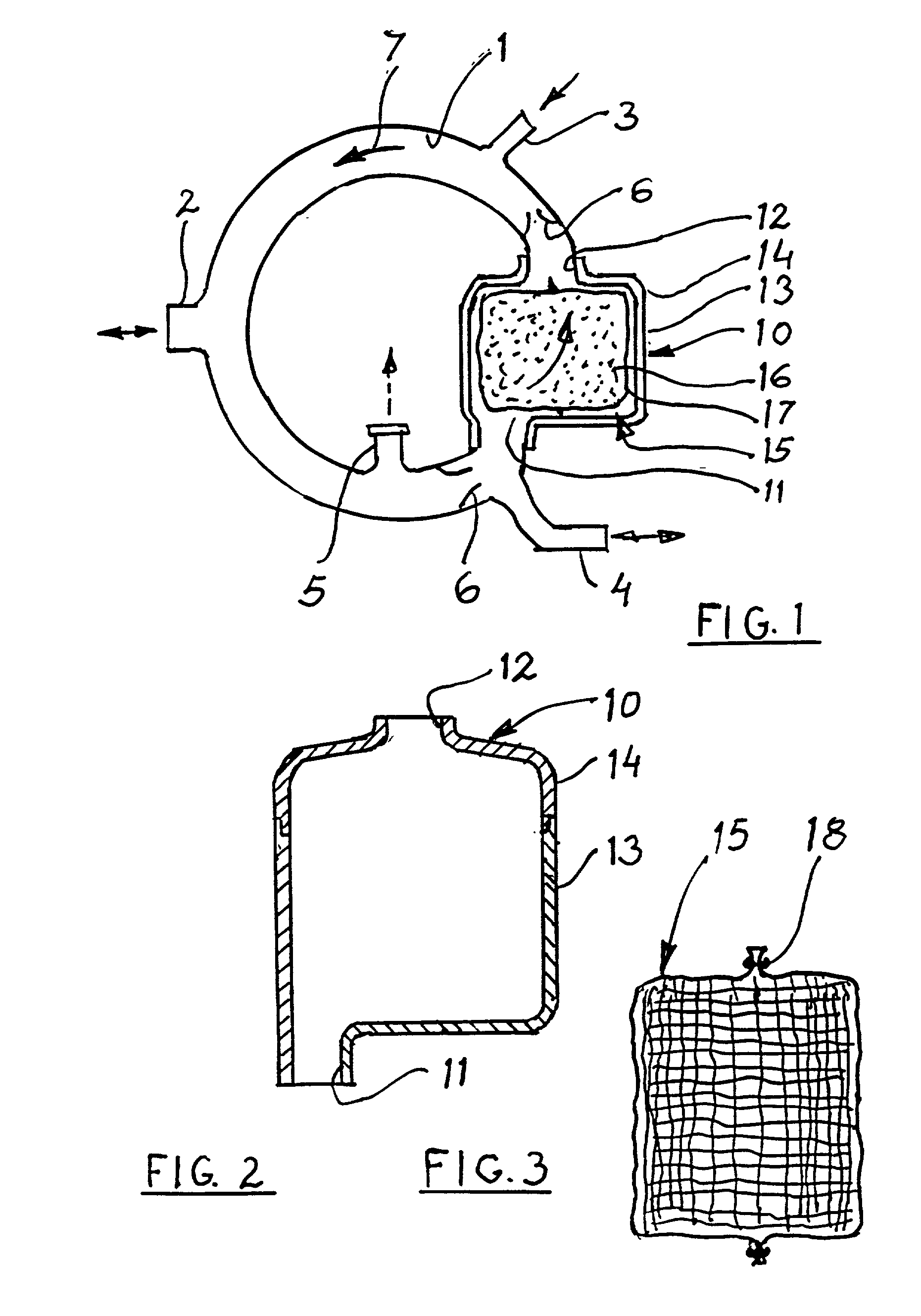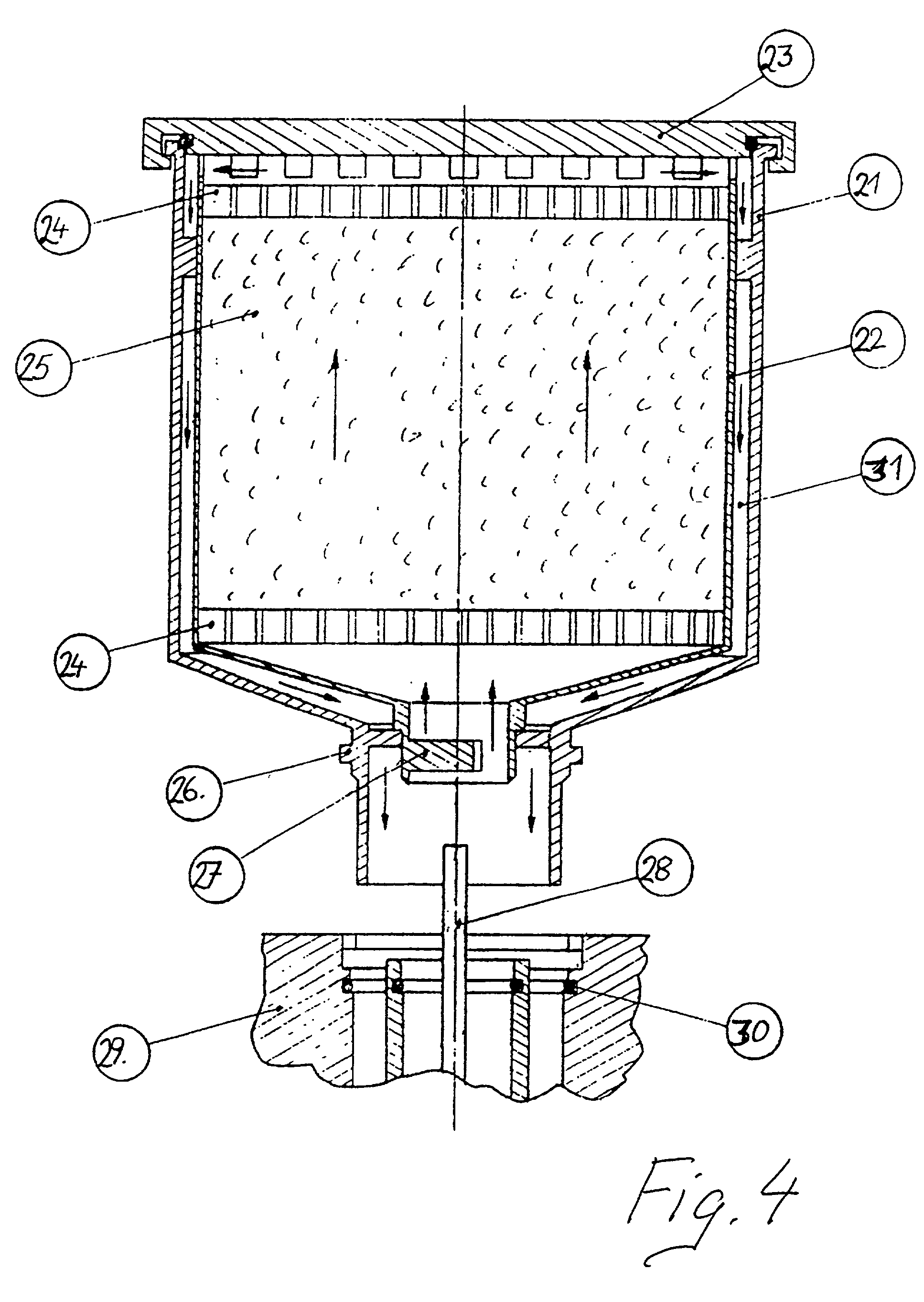Device for anaesthetic systems
a technology for anaesthetic systems and devices, applied in life-saving devices, inhalators, respirators, etc., can solve the problems of low user cost, dust absorption, and environmental problems of used and fresh absorber compounds
- Summary
- Abstract
- Description
- Claims
- Application Information
AI Technical Summary
Benefits of technology
Problems solved by technology
Method used
Image
Examples
Embodiment Construction
[0027] In the following, the device according to the invention is accomplished by means of specifying a number of measures as follows.
[0028] The absorber compound is prepared. It primarily consists of lime, which constitutes its active part. The lime is suitably added together with an indicator dye, a dyestuff, which changes colour at a certain proportion of absorbed carbon dioxide in the compound. Furthermore, additives for regulating the consistency of the compound may be present.
[0029] A cover for a certain quantity of compound is prepared. The cover should consist of a gas permeable material. A gauze made of an easily degradable material is preferred, preferably cotton or cellulose fibres. Alternatively, a gas permeable paper may be used.
[0030] The cover is filled with the intended quantity of compound and is sealed in order to form a bag or a sack which retains the compound so that it has a connection to the environment solely via the apertures and pores of the cover.
[0031] Ana...
PUM
 Login to View More
Login to View More Abstract
Description
Claims
Application Information
 Login to View More
Login to View More - R&D
- Intellectual Property
- Life Sciences
- Materials
- Tech Scout
- Unparalleled Data Quality
- Higher Quality Content
- 60% Fewer Hallucinations
Browse by: Latest US Patents, China's latest patents, Technical Efficacy Thesaurus, Application Domain, Technology Topic, Popular Technical Reports.
© 2025 PatSnap. All rights reserved.Legal|Privacy policy|Modern Slavery Act Transparency Statement|Sitemap|About US| Contact US: help@patsnap.com



